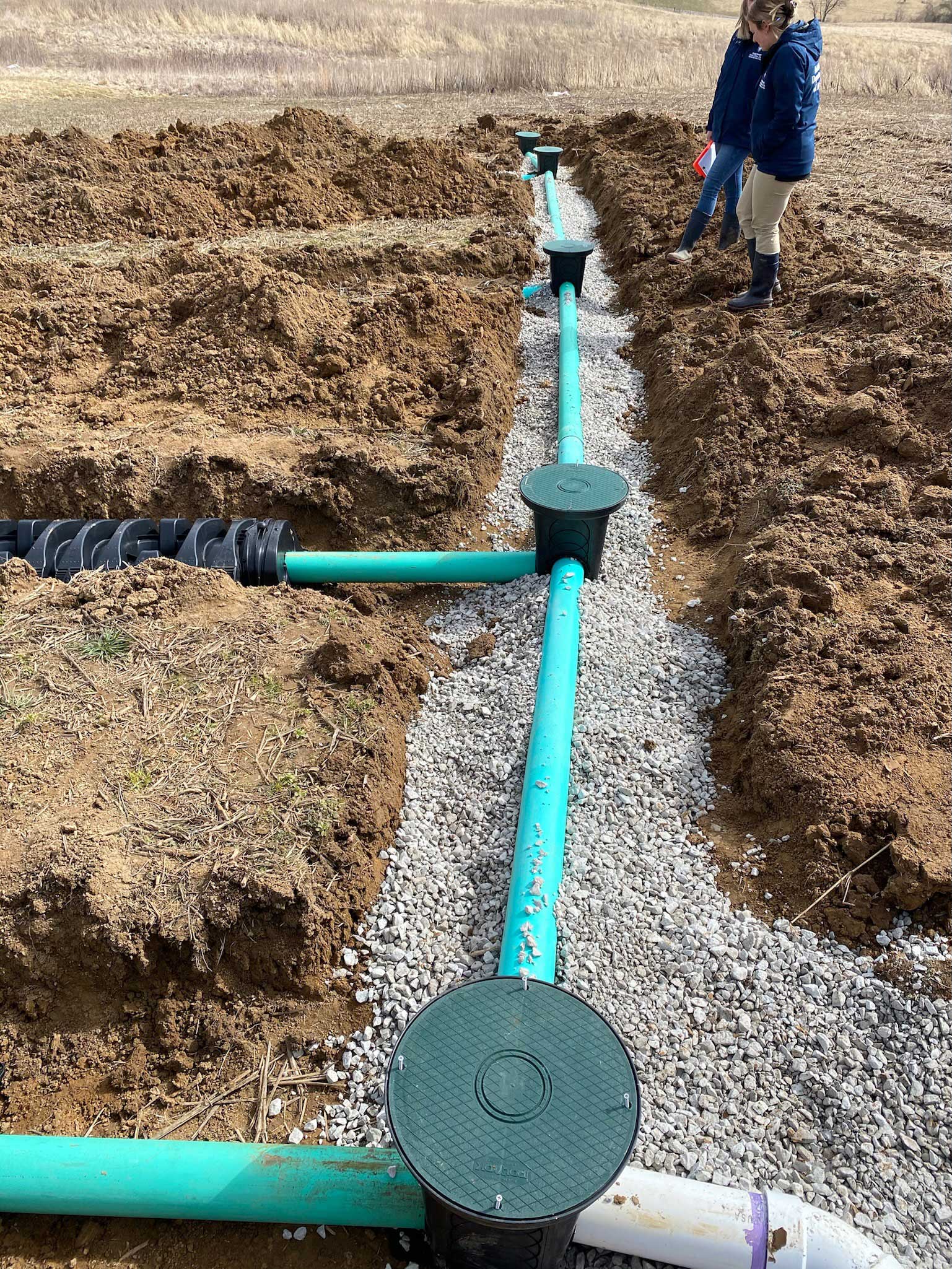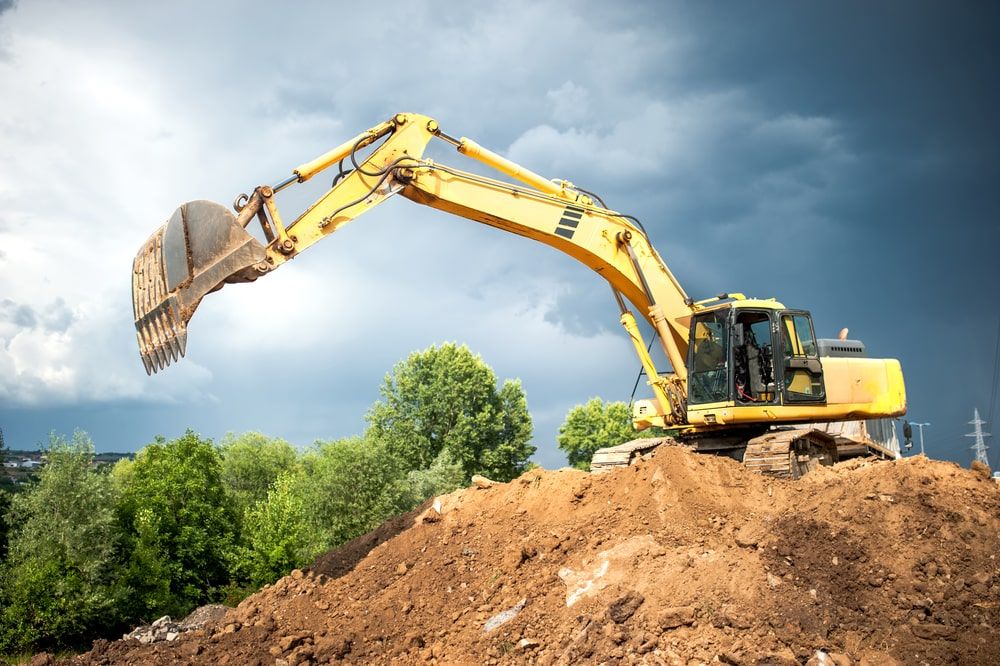Industrial Lancaster Trenching - Trenching Services for Services in Lancaster
Industrial Lancaster Trenching - Trenching Services for Services in Lancaster
Blog Article
Extensive Exploration: The Scientific Research Behind Superior Excavation Practices
The world of excavation techniques is a domain name where scientific research intertwines with craftsmanship to uncover the enigmas concealed beneath the planet's surface area. From ancient hand tools to contemporary hydraulic excavators, the development of excavation methods has been a testament to human ingenuity and technical developments. Nonetheless, what absolutely establishes exceptional excavation practices apart is a deep understanding of geological principles, coupled with the utilization of advanced tools and approaches. By checking out the scientific research behind these methods, we can discover the secrets that lie under our feet and value the precision and experience that enter into every dig.
Advancement of Excavation Methods
Throughout history, the advancement of excavation methods has actually played a critical function beforehand building methods and historical discoveries. From the basic devices used by our forefathers to the advanced equipment used in contemporary times, the development of excavation techniques has actually substantially changed exactly how we come close to various jobs.
In ancient times, hands-on labor with basic tools such as wheelbarrows, shovels, and pickaxes was the primary approach of excavation. This labor-intensive process limited the depth and range of excavations, usually leading to slow-moving progress and restricted accessibility to particular sites. As human beings advanced, so did the devices and strategies made use of for excavation.
The Industrial Transformation marked a turning factor in excavation techniques with the introduction of steam-powered machinery. This advancement changed the field, enabling faster and more considerable excavations. In modern times, innovation plays a pivotal duty in excavation, with advancements like GPS systems, drones, and 3D scanning improving precision and effectiveness in the area. The development of excavation methods continues to shape the way we develop, check out, and comprehend the world around us.
Function of Technology in Excavation

The combination of innovative innovation has basically reinvented the field of excavation, boosting accuracy and efficiency to unprecedented levels. Among the essential technical improvements that has significantly affected excavation practices is the usage of GPS systems. These systems permit exact mapping of excavation websites, enabling drivers to accurately situate underground energies and frameworks. In addition, making use of telematics in excavation tools has made it possible for real-time tracking of machine performance, leading to positive upkeep and enhanced functional productivity.
In addition, the advent of 3D modeling and simulation software application has structured the preparation process for excavation jobs. Drivers and engineers can now imagine the whole excavation procedure before breaking ground, optimizing and identifying prospective difficulties workflow. Together with this, the application of drones in excavation tasks has actually promoted airborne studies, volumetric dimensions, and website evaluations with unequaled speed and precision.
Geological Principles in Excavation
An understanding of geological concepts is crucial for making certain the structural integrity and security of excavation sites. Geological variables play a vital duty in figuring out the expediency and safety and security of excavation jobs.
Additionally, the geological framework of the area, consisting of faults, fractures, and rock formations, have to be very carefully evaluated to recognize potential threats and challenges. Digging deep into near geological fault or unstable rock developments can result in instability and possible hazards. By carrying out extensive geological studies and analysis, designers and excavators can create approaches to mitigate risks and make certain the successful conclusion of excavation tasks. Ultimately, including geological principles into excavation practices is important for accomplishing secure, reliable, and lasting outcomes.

Most Current Devices for Excavation
In the realm of excavation techniques, modern developments in tools have actually transformed the efficiency and precision of excavation processes. These drones can give in-depth aerial studies of excavation sites, supplying real-time data on topography and potential dangers.
One more cutting-edge tool gaining appeal is the implementation of 3D printing modern technology for producing custom excavation devices. This permits the manufacturing of specialized tools that are tailored to the specific demands of a project, boosting effectiveness and minimizing downtime.
Additionally, innovations in materials scientific research have led to the advancement of more powerful and much more sturdy excavation tools. lancaster trenching. Tungsten carbide-tipped excavator add-ons, for example, deal premium efficiency in challenging ground problems, boosting productivity on-site
Science's Influence on Excavation Practices

Additionally, advancements in materials scientific research have led to the production of stronger, extra long lasting excavation tools and tools. For example, the usage of composite materials in shovels and miners has actually enhanced their efficiency and longevity, eventually increasing performance on excavation sites. Furthermore, clinical research on dirt auto mechanics and geotechnical design has given important understandings into soil habits, allowing excavation experts to make enlightened choices regarding excavation techniques and dirt stablizing techniques. Generally, scientific research continues to drive technology and improvement in excavation methods, making excavation projects a lot more reliable, affordable, and lasting.

Final Thought
To conclude, the evolution of excavation strategies has actually been considerably influenced by advancements in modern technology and a deeper understanding of geological principles. The most recent devices and equipment made use of in excavation have actually improved performance and precision in the area. The application of clinical knowledge has actually dramatically improved excavation practices, bring about much more effective and lasting methods for digging deep into various kinds of products.
In the realm of excavation methods, modern innovations in tools have actually transformed the efficiency and accuracy of excavation procedures. By leveraging scientific concepts, the excavation sector has actually been able to significantly boost efficiency, precision, and safety and security in excavation processes. GPR allows excavation teams to non-invasively check and map subsurface structures, utilities, and prospective threats, enabling them to intend excavation jobs with better precision and minimized threat of mishaps.
Furthermore, clinical study on soil mechanics and geotechnical engineering has given useful insights lancaster excavation right into soil actions, allowing excavation specialists to make informed choices relating to excavation methods and dirt stabilization strategies. In general, scientific research continues to drive technology and enhancement in excavation techniques, making excavation jobs more reliable, economical, and sustainable.
Report this page